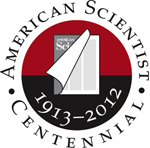Classic Book Reviews: The Early Years
By Anna Lena Phillips
We take a look back at reviews published during the first 20 years of the Scientists' Bookshelf
We take a look back at reviews published during the first 20 years of the Scientists' Bookshelf

DOI: 10.1511/2012.97.344

American Scientist’s first Scientists’ Bookshelf section appeared in April 1943, written in its entirety by Harvard University geologist Kirtley F. Mather. The table of contents for the issue noted, somewhat confusingly, “The inauguration of a department by Dr. Mather for the consideration of important publications is a noteworthy addition to any periodical.” If Mather was the author of this line, he can be pardoned: After he’d completed the last of the ten reviews included in the section, covering physics, medicine, archaeology and more, a little convolution of syntax would be understandable.
Mather stayed on as editor of the new section, and he continued to write many of the reviews himself, displaying a conversational style and eclectic and wide-ranging interests. In July 1954, he retired from Harvard and from his Bookshelf duties. In a “Valedictory” essay, he wrote:
Book-reviewing is an art, not a science. . . . There are few, if any, objective standards by which all books may be appraised. . . . Rugged individualism occupies one of its few remaining strongholds, and opportunity is still afforded for diversified personal expression. No book reviewer should imagine for a moment that he represents anybody but himself when proceeding with his task.
With these words, he departed, leaving the Bookshelf to be filled with “guest reviews by invitation of the editor.“ A number of different editors have headed the section since, but all subsequent issues have featured reviews by authorities in their field, along with a few written by American Scientist staff.
The reviews reprinted in this issue originally ran between 1943 and 1963. We have a few more favorites than would fit in print, so in the coming weeks, we’ll post some additional classics. If you find a review you especially like in a back issue, please let us know . (Reviews published from 1998 to the present are freely available on this website; earlier issues are archived in JSTOR, available through many university libraries.)
For language lovers, we mention two more milestones of the era: In 1951, the words “book shelf” in the title of the section were joined up. And in 1955, the apostrophe in Scientist’s was moved to follow the final s, reflecting the shift toward publishing reviews by a variety of reviewers, and emphasizing that good criticism is a collaborative effort.
Click "American Scientist" to access home page
American Scientist Comments and Discussion
To discuss our articles or comment on them, please share them and tag American Scientist on social media platforms. Here are links to our profiles on Twitter, Facebook, and LinkedIn.
If we re-share your post, we will moderate comments/discussion following our comments policy.